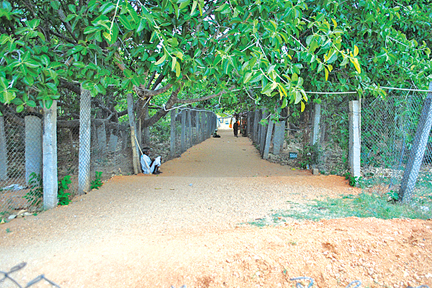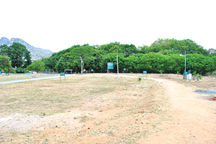|
‘Non-mixing’ waste
The answer to your question “Can garbage problem be sorted out at home?” (MM, May 16th) is a resounding YES.
The widely used phrase “Segregation of waste” is a misnomer, because 99.9 per cent of the degradable waste in any house is generated in the kitchen and 90 per cent of the solid waste problem is solved if this is not mixed with the degradable waste generated, by keeping two containers in a house and putting all degradable waste generated in the house in one of them. “Non-mixing” is therefore the appropriate phrase to be used.
If the easily available small plastic dust bin, which is opened by pressing a pedal at the bottom with the toe or the thumb, is kept in the kitchen with a few holes in it made with a hot rod or screw-driver, degradable waste can be retained in it for four or five days without generating any smell because of the aeration provided and this can then be put into the composting drum.
Some years ago, Exnora introduced a plastic drum with holes in the sides and 80 per cent of the bottom cut off for composting. I have tried this method in my complex and found it to work with minimal effort and it yields fairly good manure. The composting drum can be kept in any corner of the garden and there will be no smell or flies generated by it. The only precaution is that garden waste should not be put into this, as it is voluminous unlike kitchen waste which is very compact.
In this context, the pioneering effort of the Pune Municipal Corporation deserves mention. They have made a rule that they will clear only the non-degradable waste from buildings constructed from 2007 onwards. The residents have to retain the degradable waste within the premises and compost it themselves. The All-India organisation called KKPKP (Kach Kaagaz Patra Kaashtakaar Panchayat) is made up of rag-pickers and has trained its members in composting and they do the job in the complexes involved. For this purpose, they have formed a specific joint venture called SWACH with the Corporation. They now cover 3,20,000 premises. The rag-pickers get regular employment and lead a healthier life! They have now started the effort in Bengaluru.
Indukanth Ragade
isragade@yahoo.com
Food for the poor
The Senior Citizens’ Group of Besant Nagar (SCGOBN) plans to start a campaign against food waste in Chennai.
An enormous amount of food is wasted by hotels in Chennai, especially the star hotels. Enormous amounts of food are also wasted after marriages and other festive meals.
There is no organised means by which this food (which can be eaten) can reach the poor.
There are thousands of beggars and pavement dwellers who go without even one square meal a day in Chennai. They sleep on the pavements on a hungry stomach.
SCGOBN plans to create awareness about this sorry state of affairs and plans to work closely with the big food-wasters like star hotels to ensure edible food reaches the poor.
Those who wish to be part of this campaign please contact Prof V. Chandrasekhar, Hony President, SCGOBN, at seniorcitizensofbesantnagar@gmail.com or mobile 98842 24480.
Corporate houses interested in helping may also contact SCGOBN. We do not accept any monetary donations.
Prof. V. Chandrasekhar
President, SCGOBN
B, 12/4, 25th Cross
Besant Nagar, Chennai 600 090
Corrections
I regret that the following errors (corrections indicated) occurred in my article ‘The City’s green landmarks’ which appeared in MM, June 1st.
In the example of ‘Arsikere’, ‘kere’ refers to lake and not ‘arsi’.
‘North Canara’ should be ‘South Canara’.
Ficus benhalensis or. krishnae should be Ficus benghalensis var. krishnae.
Dr. A. Raman
(Charles Sturt University)
Orange, NSW
Australia
Thimmamma Marrimanu

The board that tells the Banyan's story.
|

A pathway through the heart of the Banyan
|

The giant Banyan tree in Anantapur District today.
The review of Nizhal’s splendid publication Living Landmarks of Chennai referred much to the banyan tree.
Thimmamma Marrimanu is the name of a banyan tree – marri means banyan and manu means tree in Telugu – in Anantapur District, about 25 km from Kadiri in Andhra Pradesh. Its branches spread over 5 acres, and has a canopy of 19,107 square metres. It is recorded as the biggest tree in the Guinness Book of World Records, 1989.
A small temple dedicated to Thimmamma is under the tree. A Telugu record in the shrine says that she was the daughter of a Setti Balija couple, Sennakka Venkatappa and Mangamma, and was born in 1394 CE. She was married to a Bala Veerayya who died in 1434 CE. Thimmamma committed sati. The banyan tree is believed to have sprouted at the place where she ascended the funeral pyre. The people of the area believe that if a childless couple worships Thimmamma they will have a child the very next year.
A big jatara is conducted here on Shivaratri and thousands of people flock here to worship Thimmamma.
– Ramineni Bhaskarendra Rao
bhaskarrsd@gmail.com
|

